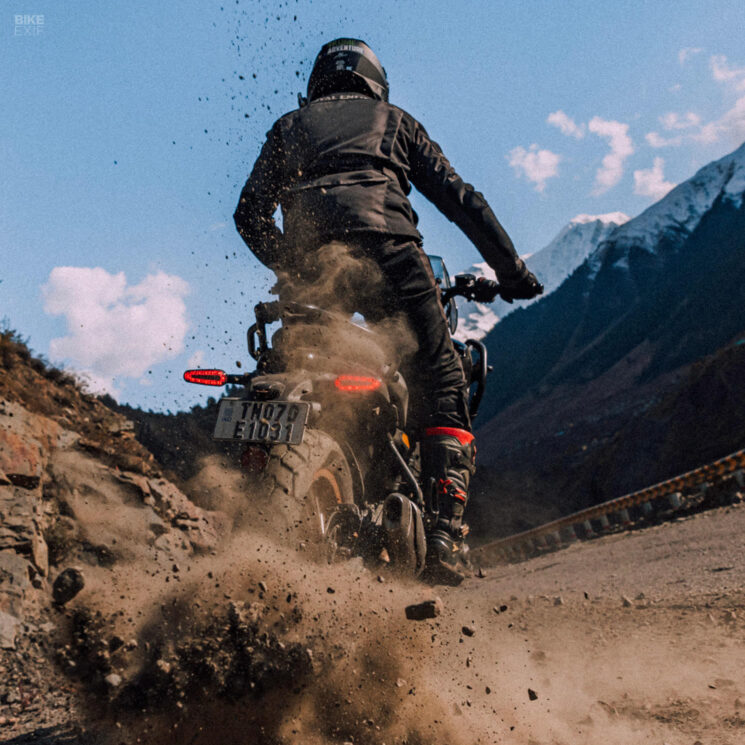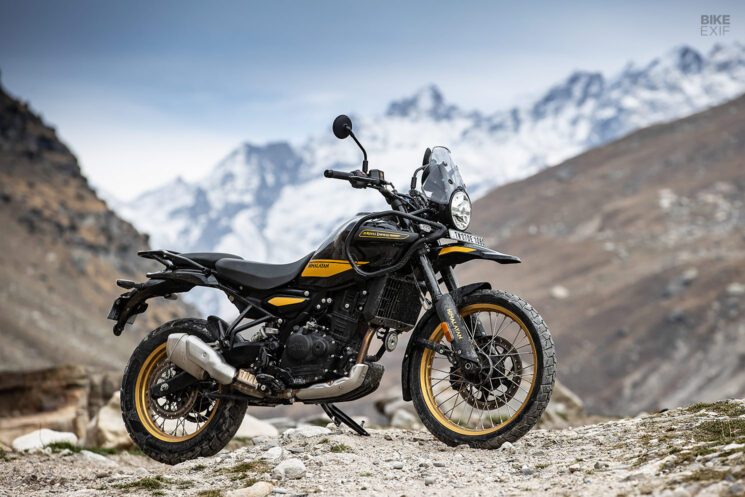
Riding a Royal Enfield in the Himalayas is a bucket list item for many motorcyclists. This fact is not lost on the Indian company—they’ve just updated the utilitarian Royal Enfield Himalayan adventure bike with refined looks, better suspension, and a first-ever liquid-cooled engine.
Unveiled at EICMA in Milan this week, the new Royal Enfield Himalayan sticks to the same ethos as its predecessor. It still has the appearance of a simple, robust machine, designed around the company’s philosophy of “everything you need, and nothing you don’t.” That said, the new Himalayan does have some additional frills.
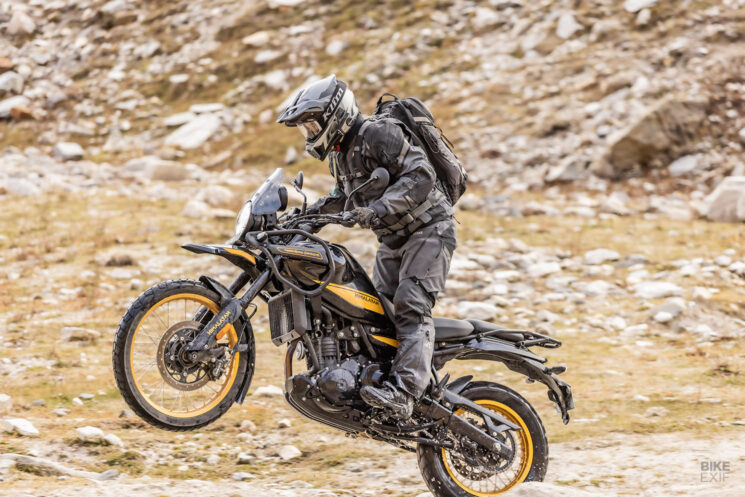
For starters, it now sports a radiator behind its front wheel. That’s because the Himalayan has traded its 411 cc air-cooled lump for Royal Enfield’s brand-new Sherpa 450 engine. The Sherpa 450 is not only new to the Himalayan—it’s also the first liquid-cooled powerplant that Royal Enfield has ever produced.
The single-cylinder 452 cc mill is good for 39.5 hp at 5,500 rpm and 40 Nm at 5,500 rpm; a decent jump over the outgoing model’s 24 hp and 32 Nm. More notably, it reached 90% of its torque from 3,000 rpm, giving it tractable power at low revs—useful for crawling over gnarly terrain. The power boost also makes the new Himalayan more long-distance-, luggage-, and pillion-friendly.
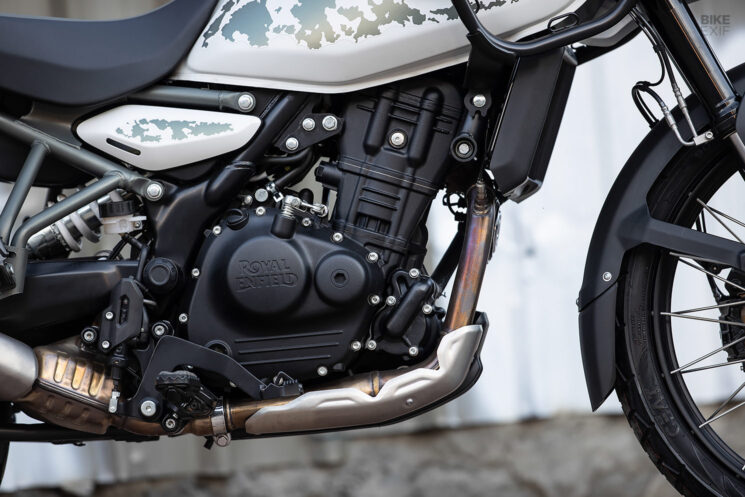
Other highlights include a semi-dry sump, designed with optimal ground clearance in mind, an integrated water pump, and a twin-pass radiator setup. The throttle is now a ride-by-wire affair, while a cable-actuated slip-and-assist clutch helps cycle through the six-speed transmission. (The latter’s revised gear ratios are said to improve the bike’s highway capabilities.)
It’s here that purists might kick back against the Himalayan’s refinements. More power is surely welcomed, but the famously bare-bones dual-sport now boasts two switchable rider modes and a big round TFT display. But if this sort of newfangled electrickery doesn’t bother you, the new dash’s functionality is worth talking about.
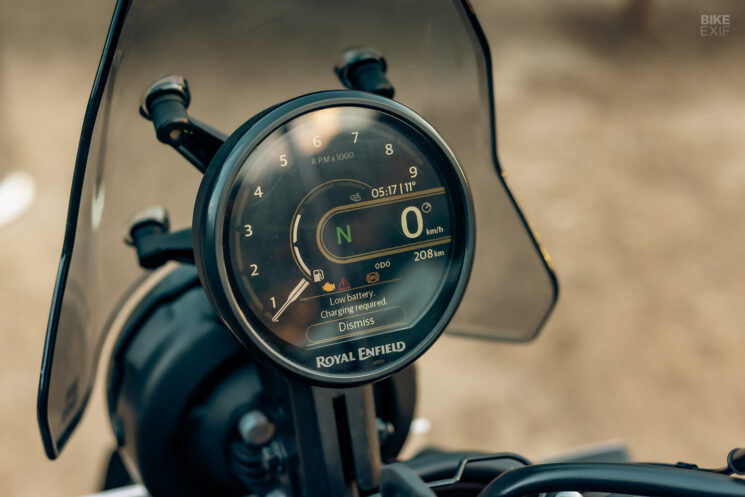
Called the TripperDash, the new display offers full map-style navigation, based on the Google Maps platform. It includes audio guidance via the system’s Bluetooth connectivity suite, which connects your smartphone, helmet comms, and motorcycle, allowing you to manage music, calls, and messages. It’s the sort of stuff that’s commonly seen on adventure bikes twice this size.
The TripperDash also has the option to switch between a classic analog-style display and a more modern layout. A joystick cluster on the left-hand switchgear cycles through the system, and there’s also the option to switch off the bike’s rear-wheel ABS for off-road shenanigans.
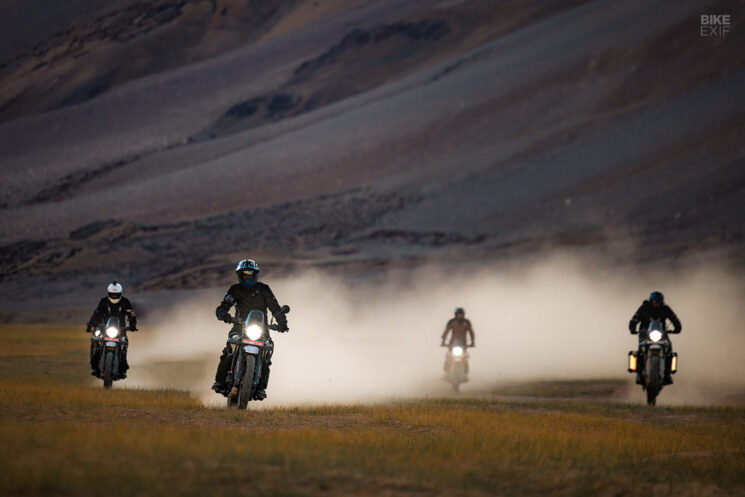
Royal Enfield says that the Himalayan’s improvements are a direct result of time spent putting the original bike through its paces; in the actual Himalayas, and at testing centers in the UK, Spain, and India. The aim was to ramp up the bike’s capability, while still keeping it small and approachable. And that called for changes beyond just a new engine.
The 2024 Royal Enfield Himalayan now boasts an all-new twin-spar frame, stiffer and stronger than before. Royal Enfield claims that the revised chassis feels better on twisty mountain passes, matches the increased power from the new motor, and improves its off-road capability. At 181 kg [399 lbs] dry, it’s no featherweight—but it’s not unmanageable either.
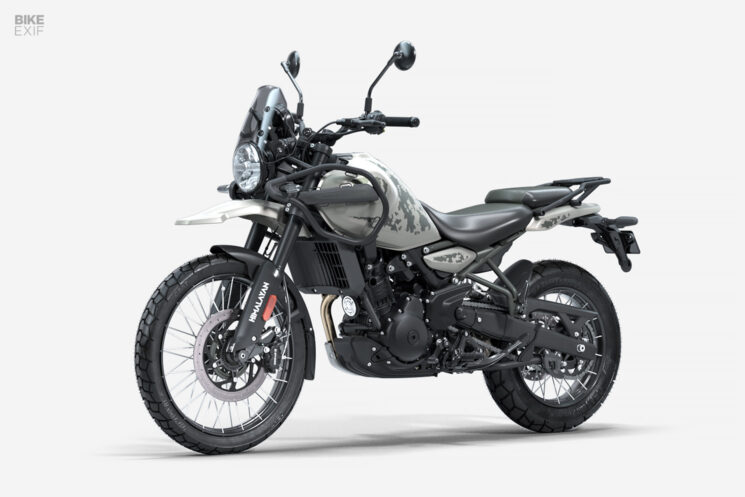
New Showa cartridge-type upside-down forks sit up front, offering increased travel and better stability over rough terrain. Suspension travel is up to 200 mm at each end, with 230 mm of ground clearance. The Himalayan’s 21F/17R wheels now feature updated aluminum alloy rims, and the rear wheel width has been bumped up to a width of 140.
There’s a clear visual difference between the old and new Himalayans. The new iteration has lost some of the old one’s blockiness, thanks to a more contoured tank, sharper fenders, and a host of other visual refinements. It still feels utilitarian, but we’re now picking up shades of bigger single-cylinder adventure bikes—like the defunct Yamaha XT660Z Ténéré.

The revised bodywork isn’t just better-looking—Royal Enfield says that it all serves to improve the Himalayan’s ergonomics. The 17-liter [4.5-gallon] fuel tank is sculpted to offer more room for the rider’s knees, and the rider’s portion of the split seat has 20 mm of adjustability. Between that, and the optional low seat, your choice of seat height lies between 805 mm and 845 mm.
Royal Enfield has kept the Himalayan’s quirky fairing crash bars, which not only protect the plastics but also feature loops to tie things to. There are subtle considerations for rough use too, like an air intake that’s high enough to survive water crossings. Optional extras include everything from hand guards to an upgraded sump guard, fog lights, alternative seats, and various luggage options.

The 2024 Royal Enfield Himalayan will launch in India soon, and eventually roll out to Europe, the Asia-Pacific region, and the Americas. There are five colorways to choose from, ranging from the plain ‘Kaza Brown’ to the sharp black and gold ‘Hanle Black.’
We’ve had a soft spot for the Himalayan ever since it hit the scene—both the stock bike and the myriad ways we’ve seen it customized—and these updates have made it that much more appealing. All we’re left wondering is if Royal Enfield plans to roll out these changes to the Himalayan’s pared-back cousin, the Scram.
Source: Royal Enfield
